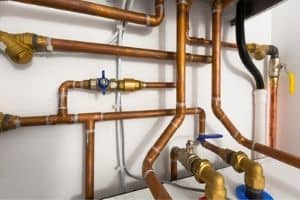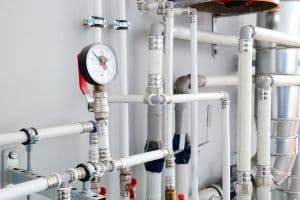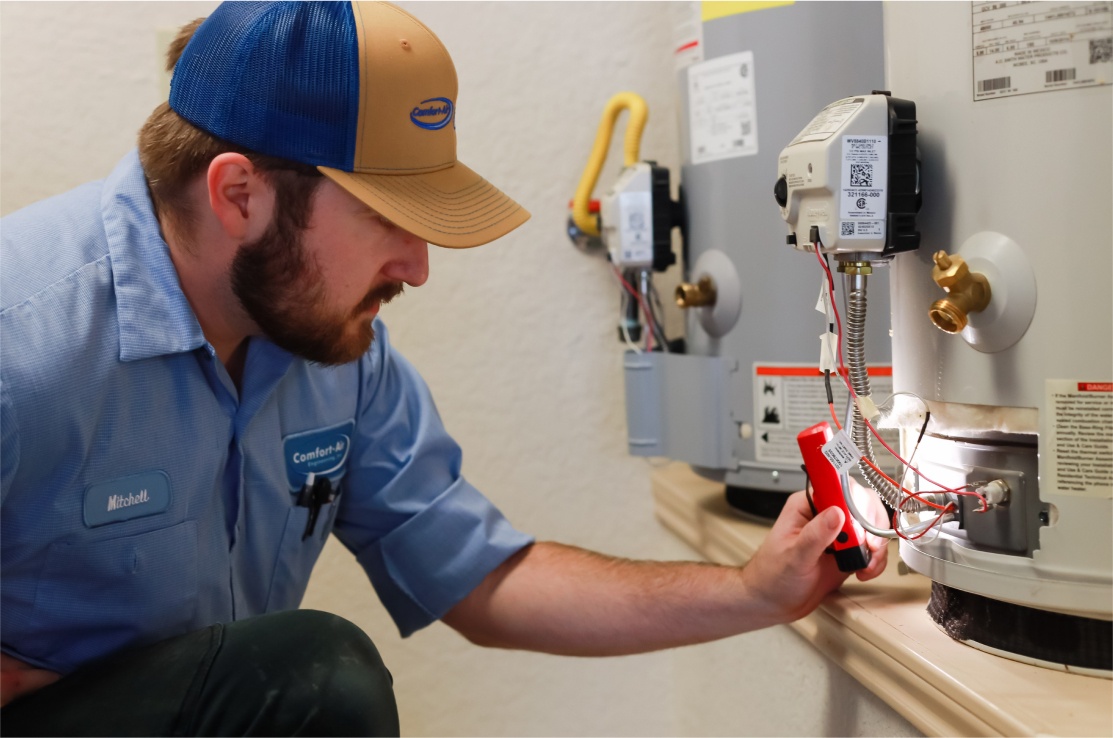
Deciding Between Copper & Plastic Pipes for a Piping System?

If you need to repipe your home, you’re probably uncertain about whether to use copper or plastic pipes. It’s an ongoing debate as to which is better, and often it seems that people have their material of choice, certain that it’s better than any other available option.
If you’re replacing piping, you’re likely deciding between copper or plastic, which is more specifically cross-linked polyethylene (PEX). The reality is that there is not one substance that is definitively better. Instead, each has its pros and cons.
So today we won’t select one material as better than the other, but we will provide you with extensive information about each, to help you determine which material is best for you and your home’s plumbing system.
The Pros of Copper Water Pipes
 For many years, copper pipes were the primary choice for water pipes. The substance is reliable and provides a few inherent benefits. Namely, it’s durable and resists corrosion.
For many years, copper pipes were the primary choice for water pipes. The substance is reliable and provides a few inherent benefits. Namely, it’s durable and resists corrosion.
It’s also unaffected by UV rays, which means that it can be used outdoors. Copper pipes also are difficult for bacteria to grow in, and they resist snapping. Given these benefits and the material’s versatility, copper pipes have long been a favorite of both homeowners and plumbers.
The Pros of Plastic (PEX) Water Pipes
 Most new homes utilize PEX pipes for the piping system. This relatively new material is flexible and easy to install. It’s much more affordable than copper piping, in part due to the substantially lower installation costs.
Most new homes utilize PEX pipes for the piping system. This relatively new material is flexible and easy to install. It’s much more affordable than copper piping, in part due to the substantially lower installation costs.
PEX piping is flexible, making it a good option for small spaces where it’s difficult to fit rigid piping, like copper. PEX piping involves fewer connections and fittings, which decreases the risks of leaks.
What’s better, PEX piping does not corrode, and it’s not susceptible to freezing, so it doesn’t carry the risks of a burst pipe during winter. Given these advantages, it’s no wonder that it’s the most popular choice right now for new builds.
Things to Consider if You’re Repiping
 If you do need to repipe your home, you’ll want to also consider the disadvantages that come with each piping system.
If you do need to repipe your home, you’ll want to also consider the disadvantages that come with each piping system.
As alluded to above, copper is significantly more expensive than PEX piping and can be as much as 10 or 15 times more expensive than other piping options.
Additionally, water can freeze in copper pipes, causing the pipe to burst. While copper pipes resist corrosion, they can corrode in some pH levels. Finally, with copper pipes, especially new ones, there is a risk of copper getting into your home’s water supply.
When water sits in copper piping, some of the copper can leach into your water. Yet, PEX piping also carries its own disadvantages. First, it cannot be used outside. Second, it can expand and contract, which can cause a variety of issues for homeowners.
Third, it is not impermeable, which can lead to water contamination. Fourth, rodents or animals can – and sometimes do – chew and gnaw through these pipes. Given their unique advantages and disadvantages, it’s not surprising that the debate is ongoing as to which type of piping system is best.
Hopefully, this information will help you make a decision about what type of piping to use. And, if you need to have a home repiping or if you have any questions about your piping system, call Primo Plumbing Inc today at (210) 494-1691.






